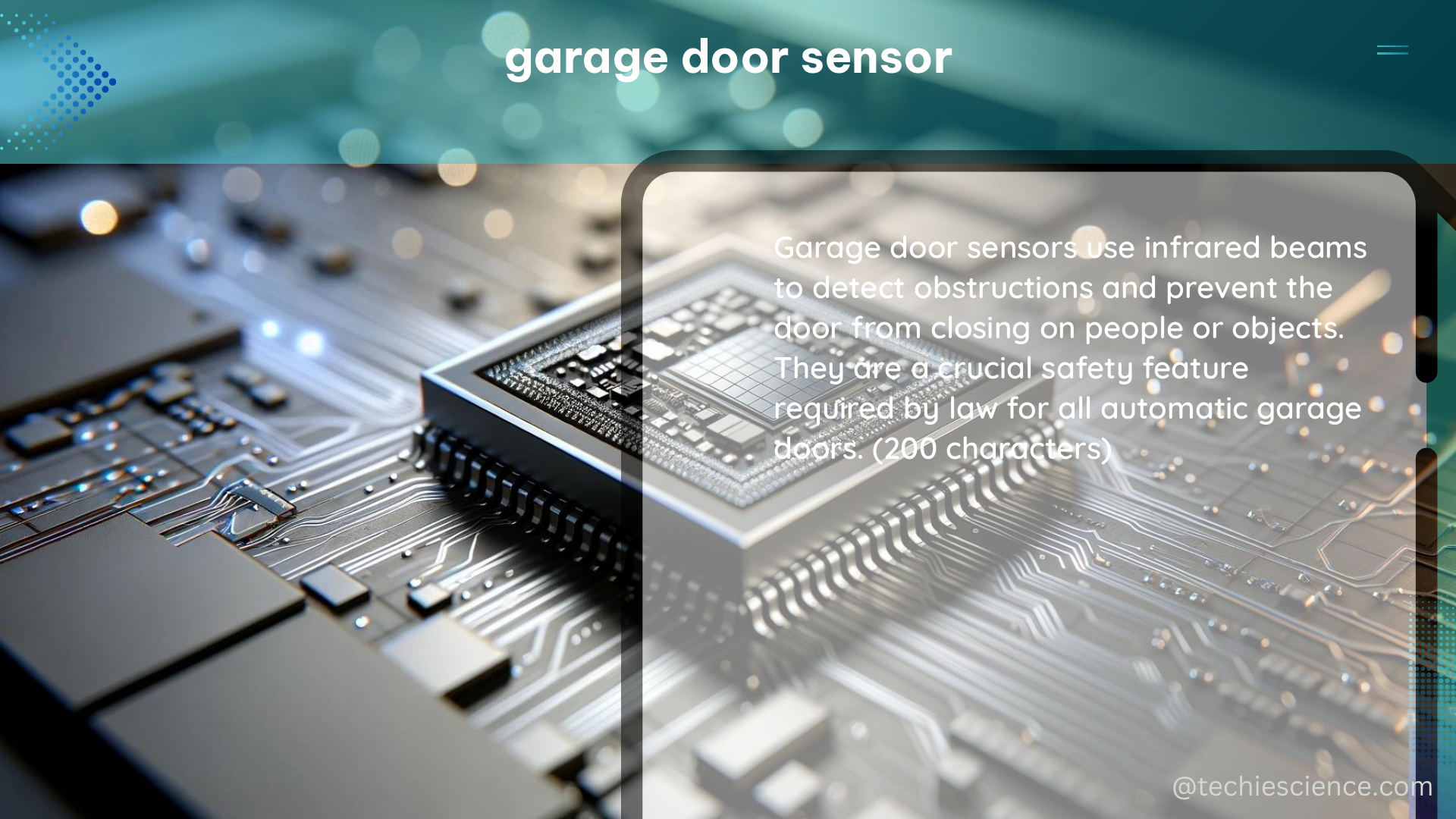Garage door sensors are a critical component of modern garage door systems, ensuring the safe and reliable operation of these essential home features. These sensors, typically photoelectric or radio frequency (RF) based, play a crucial role in detecting obstructions and reversing the door’s movement to prevent accidents and damage. In this comprehensive guide, we’ll delve into the technical specifications and measurable data points that define the performance and capabilities of garage door sensors.
Technical Specifications of Garage Door Sensors
Detection Range
The detection range of a garage door sensor is the maximum distance between the emitter and receiver that still allows for reliable object detection. This specification is crucial in ensuring the sensor can effectively cover the entire width of the garage door opening. A common example is the Chamberlain LiftMaster 139.53901 safety sensor, which has a detection range of up to 24 inches (61 cm).
Field of View
The field of view, or the angle at which the sensor can detect objects, is another important specification. A wider field of view allows the sensor to cover a larger area, reducing the risk of missed obstructions. The Chamberlain LiftMaster 139.53901 sensor, for instance, has a field of view of 18 degrees.
Current Draw
The current draw of a garage door sensor is the amount of electrical current it consumes during operation. This specification is essential for ensuring the sensor’s compatibility with the garage door opener’s power supply and for monitoring the overall system’s energy efficiency. The Chamberlain LiftMaster 139.53901 sensor has a current draw of 15mA.
Response Time
The response time of a garage door sensor is the time it takes for the sensor to detect an object and send a signal to the garage door opener. This metric is particularly important in safety-critical applications, where a quick response can prevent accidents or damage. Manufacturers often provide the response time specification for their sensors.
RF Communication Specifications
For garage door sensors that use radio frequency (RF) communication to transmit signals to the opener, additional specifications related to signal strength and frequency become relevant. These include the sensor’s transmission power, receiver sensitivity, and operating frequency, which can be measured to ensure reliable and interference-free communication.
Measurable Data Points for Garage Door Sensors

In addition to the technical specifications, there are several measurable data points that can be used to evaluate the performance and condition of garage door sensors during operation.
Sensor Alignment
One of the most critical measurements for garage door sensors is their alignment. Proper alignment ensures the emitter and receiver are properly positioned, allowing the infrared beam to be detected reliably. Misalignment can be detected by measuring the signal strength or by physically inspecting the sensor’s positioning.
Beam Interruption Detection
The ability of the sensor to detect when the infrared beam is interrupted can be measured by placing an object in the beam’s path and verifying that the sensor correctly triggers the garage door opener to stop or reverse the door’s movement.
Response Time Measurement
As mentioned earlier, the response time of the sensor can be measured by introducing an object into the beam’s path and recording the time it takes for the sensor to detect the obstruction and send a signal to the opener.
Current Consumption Monitoring
Regularly monitoring the current draw of the garage door sensor can help identify any issues with the sensor’s power consumption or potential malfunctions. Deviations from the manufacturer’s specified current draw can indicate problems that require further investigation or sensor replacement.
RF Signal Strength and Frequency
For RF-based garage door sensors, measuring the signal strength and operating frequency can help ensure reliable communication between the sensor and the opener. Low signal strength or interference from other wireless devices can cause connectivity issues and should be addressed.
Conclusion
Garage door sensors are essential components that ensure the safe and reliable operation of garage door systems. By understanding the technical specifications and measurable data points associated with these sensors, homeowners, installers, and technicians can effectively maintain, troubleshoot, and optimize the performance of their garage door systems. This comprehensive guide has provided a detailed overview of the key specifications and measurable data points to consider when working with garage door sensors, empowering you to take control of your home’s garage door safety and functionality.
References:
– Reddit Discussion on Misaligned Garage Door Sensors
– Reverse Engineering Wired Garage Door Signal
– Bypassing/Emulating Garage Door Opener Safety Sensors

The lambdageeks.com Core SME Team is a group of experienced subject matter experts from diverse scientific and technical fields including Physics, Chemistry, Technology,Electronics & Electrical Engineering, Automotive, Mechanical Engineering. Our team collaborates to create high-quality, well-researched articles on a wide range of science and technology topics for the lambdageeks.com website.
All Our Senior SME are having more than 7 Years of experience in the respective fields . They are either Working Industry Professionals or assocaited With different Universities. Refer Our Authors Page to get to know About our Core SMEs.